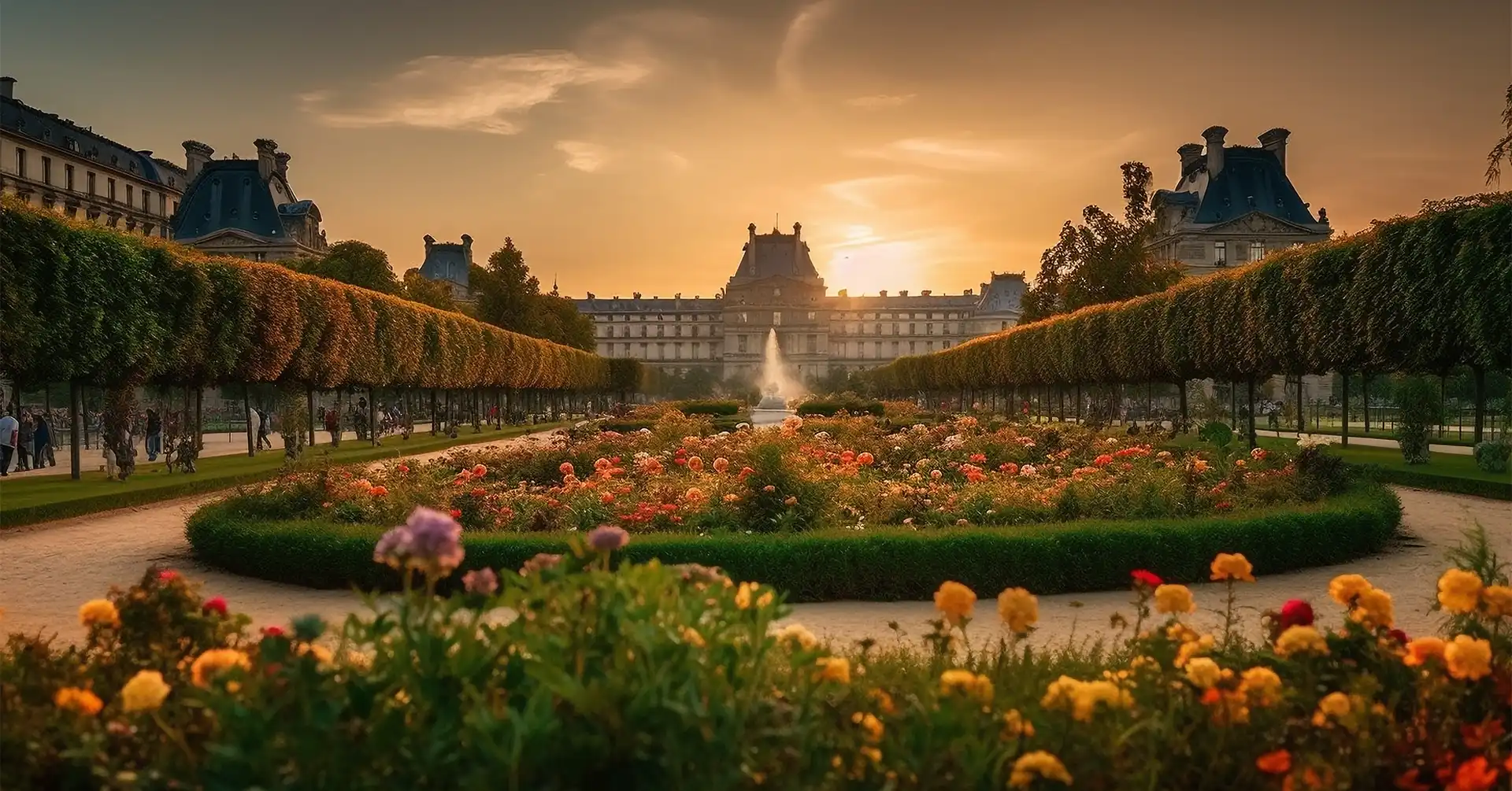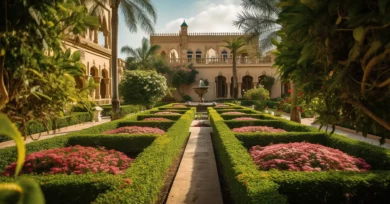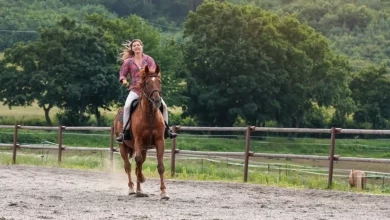Europe is home to some of the world’s most beautiful and diverse parks. Whether you’re visiting a bustling city or a remote rural area, you are likely to find a green space nearby that offers a peaceful escape from daily life. Parks in Europe showcase a mix of natural beauty, cultural landmarks, and recreational areas, making them popular spots for locals and tourists alike.
In addition to their beauty, many European parks also hold historical significance. Some were originally created as gardens for royalty, while others have been carefully maintained to preserve the natural habitats of local wildlife. No matter where you are in Europe, parks offer a unique glimpse into the region’s history and culture.
The Importance of Parks for Recreation and Well-being
Parks in Europe play an important role in promoting health and well-being for people of all ages. They provide a natural space for exercise, relaxation, and socializing, offering a break from the fast-paced, concrete jungle of modern urban life. Spending time in parks has been shown to reduce stress, improve mental health, and boost physical fitness.
Parks are also important for families, as they offer safe and welcoming spaces for children to play and explore. Many parks include playgrounds, picnic areas, and sports facilities that encourage outdoor activities. For those who enjoy solitude, parks offer quiet corners where you can read a book, meditate, or simply appreciate the beauty of nature.
Historical Parks
European parks often showcase a rich history that dates back centuries. These historical parks offer a glimpse into the past and allow visitors to immerse themselves in the stories and traditions of the people who created and maintained them. Here are some aspects of historical parks in Europe:
Gardens with a Rich Heritage
Parks in Europe often contain gardens with a deep and fascinating heritage. Many of these gardens were created during various periods in history, from medieval times to the Renaissance and beyond. They feature traditional designs, ornamental plants, and carefully crafted landscapes that reflect the style and tastes of the era. These gardens are not just beautiful to look at, but they also provide insight into the horticultural practices and artistic influences of the past.
The Legacy of Royal and Aristocratic Landscapes
Many of the historical parks in Europe were once part of royal or aristocratic estates. These parks showcase grand designs with elegant pathways, statues, and fountains. They often include features such as intricate maze gardens, picturesque lakes, and impressive architectural structures like pavilions and gazebos. This legacy of grand landscapes highlights the wealth and taste of Europe’s former ruling classes and offers visitors a chance to explore the opulence of the past.
Urban Oasis
European cities are known for their vibrant culture and bustling streets, but they also offer green spaces that provide a peaceful escape from the urban hustle. These city parks in Europe act as oases where residents and visitors can relax, exercise, and enjoy nature.
City Parks: Balancing Nature and Urban Living
City parks in Europe play a vital role in maintaining a balance between urban development and natural landscapes. They provide spaces for people to take a break from the fast-paced city life and connect with nature. These parks are designed to accommodate various activities, from jogging paths and sports fields to tranquil lakes and gardens.
By offering spaces for relaxation and leisure, urban parks improve the quality of life for city dwellers. They promote physical and mental well-being by providing areas for exercise, meditation, and social interaction.
The Role of Parks in European Cities
Parks in Europe contribute to the overall charm and character of cities. They enhance the beauty of urban environments and offer a refreshing contrast to the concrete jungle. Many European cities incorporate parks as key elements of their planning and design, ensuring that residents have access to green spaces within walking distance.
These parks also host community events and cultural activities, making them important gathering places for people of all ages. From open-air concerts to art exhibitions, city parks are hubs of activity that foster a sense of community.
National Treasures
Europe is home to some of the world’s most beautiful national parks. These protected areas preserve the natural beauty and biodiversity of the continent, providing habitats for a wide range of plants and animals. National parks in Europe also offer a peaceful retreat for visitors who want to experience nature and outdoor activities.
Preserving Nature: Europe’s National Parks
Europe’s national parks play a vital role in conserving the environment. They safeguard natural landscapes and wildlife, ensuring these treasures are protected for future generations. Parks in Europe offer diverse ecosystems, from lush forests and high mountains to coastal areas and wetlands. By preserving these spaces, national parks help maintain a balance between human activity and nature.
Many national parks in Europe work to promote sustainability and responsible tourism. Visitors are encouraged to follow guidelines that protect the natural environment, such as sticking to marked trails and respecting wildlife. This approach helps keep the parks pristine and enjoyable for everyone.
Popular National Parks Across Europe
Europe boasts many stunning national parks that attract visitors from around the world. Some of the most popular parks include:
- Plitvice Lakes National Park, Croatia: Known for its breathtaking waterfalls and crystal-clear lakes, Plitvice offers a series of beautiful trails and scenic spots.
- Caldera de Taburiente National Park, Spain: This park features dramatic landscapes, including volcanic craters and lush forests. It’s a great place for hiking and stargazing.
- Jotunheimen National Park, Norway: Home to some of Norway’s tallest peaks, Jotunheimen is a paradise for outdoor enthusiasts who enjoy hiking and mountaineering.
- Saxon Switzerland National Park, Germany: This park is known for its unique rock formations and beautiful hiking paths, making it a favorite destination for nature lovers.
- Snowdonia National Park, Wales: Snowdonia is famous for its rugged mountains and picturesque lakes, offering opportunities for hiking, climbing, and exploring historic sites.
Ecological Diversity
Varied Flora and Fauna in European Parks
Parks in Europe offer a wide variety of plants and animals. Visitors can experience lush green forests, colorful wildflowers, and ancient trees. Some parks have unique ecosystems with rare species you can’t find anywhere else in the world. For example, the Caledonian Forest in Scotland is home to ancient pine trees and wildlife like red squirrels and golden eagles.
The different climates and landscapes across Europe mean that each park has its own distinct flora and fauna. For instance, Mediterranean parks feature olive trees and bright flowers like poppies, while parks in the north have pine and birch trees. Many parks also offer opportunities for birdwatching, with species like swans, herons, and birds of prey.
Conservation Efforts and Biodiversity
Parks in Europe play a crucial role in protecting nature and preserving biodiversity. Many parks have conservation programs to protect endangered plants and animals. They create safe habitats for wildlife, helping species to survive and thrive. For instance, in the Iberian Peninsula, parks work to protect the Iberian lynx, one of the world’s most endangered cats.
In addition to preserving wildlife, these parks also safeguard important natural features such as wetlands, mountains, and coastlines. By conserving these areas, parks help maintain healthy ecosystems that provide clean air and water.
Adventure and Exploration
Exploring parks in Europe can be an exciting experience for nature lovers and adventure seekers alike. European parks offer a wide range of opportunities for those who want to immerse themselves in the natural beauty of the continent. Here, you’ll find the best spots for hiking trails, scenic routes, and outdoor activities.
Hiking Trails and Scenic Routes
Parks in Europe are home to some of the most stunning hiking trails and scenic routes in the world. These trails take you through lush forests, majestic mountains, and picturesque countryside. Whether you’re a seasoned hiker or just starting out, there’s a trail for you. Along the way, you can enjoy breathtaking views of landscapes and encounter unique flora and fauna.
Some popular hiking destinations include:
- The Alps: Known for its challenging hikes and panoramic views.
- The Pyrenees: Offering both easy walks and tougher treks through the mountains.
- Scotland’s Highlands: Famous for its rugged beauty and historic routes.
Outdoor Activities and Adventures
Parks in Europe provide plenty of opportunities for outdoor fun and adventure beyond hiking. Depending on the park and the region, you can engage in a variety of exciting activities:
- Cycling: Many parks have bike paths or mountain biking trails that offer a thrilling experience.
- Water Sports: In parks with lakes or rivers, you can try kayaking, canoeing, or paddleboarding.
- Wildlife Watching: Parks are often home to diverse animal species, making wildlife watching an enriching experience.
Cultural Landmarks
Parks as Cultural and Historical Sites
Many parks in Europe are not just places of natural beauty; they are also rich in history and culture. These parks often hold stories of the past, with historic buildings, ancient ruins, and cultural monuments scattered throughout their grounds. For instance, you might find remnants of a royal palace or an old castle nestled within the greenery of a park. These sites offer a unique chance to experience European heritage in a natural setting.
Exploring parks in Europe can be like walking through a living museum, as you might come across statues and sculptures that celebrate important historical figures or moments in history. These art pieces can add depth and meaning to your visit, connecting you to the local culture and traditions.
Famous Monuments and Sculptures
As you stroll through parks in Europe, you’ll often encounter various monuments and sculptures. These art installations can range from traditional statues of famous individuals to contemporary pieces created by modern artists. These works of art not only enhance the aesthetic appeal of the park but also provide insight into the region’s artistic and historical heritage.
For example, many parks feature statues honoring local heroes, historical figures, or even mythical beings. These monuments can be a great way to learn more about the area’s history and culture. Additionally, some parks are home to grand memorials or monuments dedicated to significant events or movements, adding an educational aspect to your visit.
By visiting parks in Europe, you can immerse yourself in a rich blend of natural beauty, history, and culture. The presence of famous monuments and sculptures makes these parks truly special and memorable places to explore.
Conclusion
In conclusion, visiting parks in Europe offers a unique blend of natural beauty, cultural heritage, and history. These parks serve as living museums with famous monuments, sculptures, and historical sites that enrich the experience for visitors. Whether you are exploring the rich ecological diversity, engaging in outdoor activities, or admiring cultural landmarks, parks in Europe provide a diverse and memorable experience that connects you with the past and present of the region. Make sure to visit these beautiful parks to truly appreciate all they have to offer.
Also Read:






